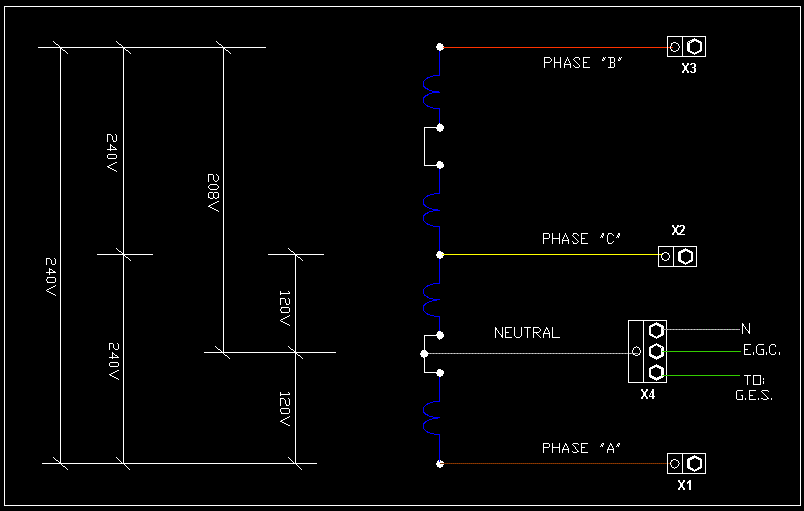Hameedulla-Ekhlas
Senior Member
- Location
- AFG
Greeting all,
Reading Jan.Top-30 posted answer and question I found one thing about High leg and it is NEC artical [408.3(F)].
If a 4-wire, delta-connected, three-phase (high-leg) system supplies a panelboard, the high-leg (or wild-leg) conductor which operates at 208V to ground must be terminated to the ?B? phase of the panelboard.
It is a new thing I have heard but I am really interested to be clear more for me.
My question:
1- Is this only in delta connection or in wye connection too?
2- What is the doing advantage of this?
3- In delta 3ph 208/120 how one phase should be 208 volt and why it is not in wye connection.
Is there any explaination reference except NEC regarding this.
Hope to advise me soon.
Reading Jan.Top-30 posted answer and question I found one thing about High leg and it is NEC artical [408.3(F)].
If a 4-wire, delta-connected, three-phase (high-leg) system supplies a panelboard, the high-leg (or wild-leg) conductor which operates at 208V to ground must be terminated to the ?B? phase of the panelboard.
It is a new thing I have heard but I am really interested to be clear more for me.
My question:
1- Is this only in delta connection or in wye connection too?
2- What is the doing advantage of this?
3- In delta 3ph 208/120 how one phase should be 208 volt and why it is not in wye connection.
Is there any explaination reference except NEC regarding this.
Hope to advise me soon.




